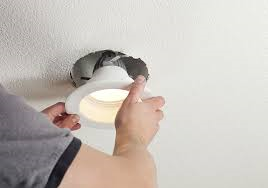Most of the efforts to upgrade buildings have focused on big ones so far, but now the Department of Energy (DOE) is turning to small ones too.
Schools, churches, strip malls, restaurants and grocery stores will all benefit, which make up 90% of our commercial buildings, and consume 20% of US energy. They are less than 50,000 square feet.
DOE is putting $10 million toward six projects with the goal of developing user-friendly tools and resources that can be easily deployed at any small building. The funds will be matched by at least $14 million from the private sector.
For example, the average small restaurant could cut energy use by up to 45%; a grocery store would improve margins 16% by reducing energy costs by just 10%.

The problem is that small building owners and operators often lack the capital and resources to invest in the measures that will produce these savings. So DOE’s investment prioritizes hassle-free tools and practices that require little time, technical expertise and financial investment on the part of small building owners or tenants.
The funds will support these initiatives:
BlocPower ($1.9 million) – Based in New York, the company is developing a crowdsourcing website to help market, finance and install energy efficiency retrofits for 1,500 small buildings. Its pilot focuses on Baltimore, Boston, Cleveland and Raleigh-Durham, NC.
EcoCity Partners ($322,978) – Headquartered in St. Petersburg, Fla., the organization is leading a project to design and offer pre-packaged technology retrofit options by building type and size, business type, and climate zone. The project will also help small building owners evaluate commercial property assessed clean energy (PACE) financing options. It will handle retrofits at 50 buildings under its pilot.
Ecology Action of Santa Cruz, Inc. ($2 million) – will outfit an existing network of contractors in California with low-cost, high-impact tools they can use to analyze retrofit and financing options appropriate to small buildings. It expects to reach about 900 small buildings in northern California, supporting retrofits in at least 300.
Lawrence Berkeley National Lab ($2 million) – The lab is partnering with Architecture 2030 to develop a 2030 District program for small commercial office and retail buildings, including a technical toolkit that provides financing guidance, best practices and resources for building owners and operators. The initial stage will center on 25-40 buildings across existing 2030 Districts in Seattle, Cleveland, Pittsburgh and Los Angeles. It will support 5-10 new districts by 2015.
National Trust for Historic Preservation ($2 million) – will work with DOE’s National Renewable Energy Lab to provide low-cost energy efficiency services to small businesses in California, Wisconsin, New York and Washington state. The effort will leverage the Trust’s National Main Street Center – a network of communities focused on preservation-based economic revitalization.
Southface Energy Institute ($1.9 million) – will develop low-cost evaluation and upgrade tools that help buildings meet or exceed Architecture 2030 Challenge targets that raise efficiency 50% for new construction and 20% for retrofits. They will also create training materials in collaboration with Oak Ridge National Lab and Georgia Tech to help local contractors conduct energy audits for about 240 small buildings in the Atlanta metro area.
DOE is also supporting development of leading edge building technologies and launched a database that makes the energy performance of 60,000 commercial buildings available to the public for the first time.
Here is DOE’s commercial building website:

This is great news! These are practical steps which have small commercial buildings come into focus to spur economic activity while combating climate change. I hope this $ amount can be increased to promote similar efforts in more areas of the U.S.